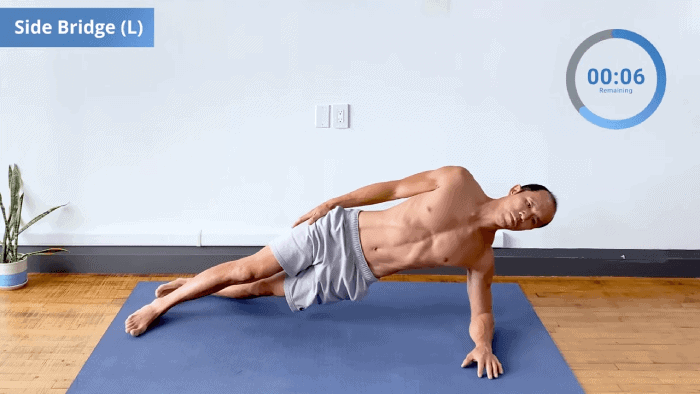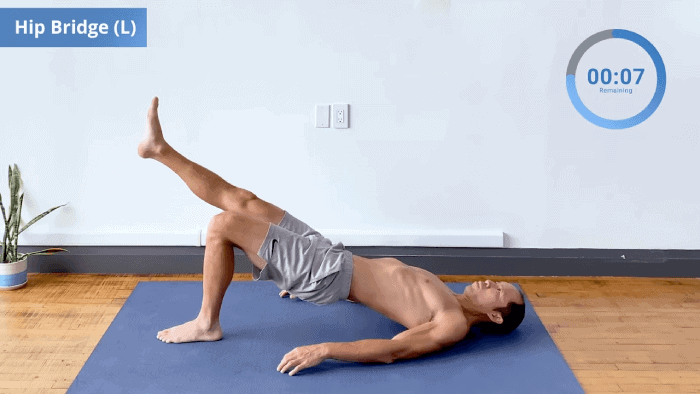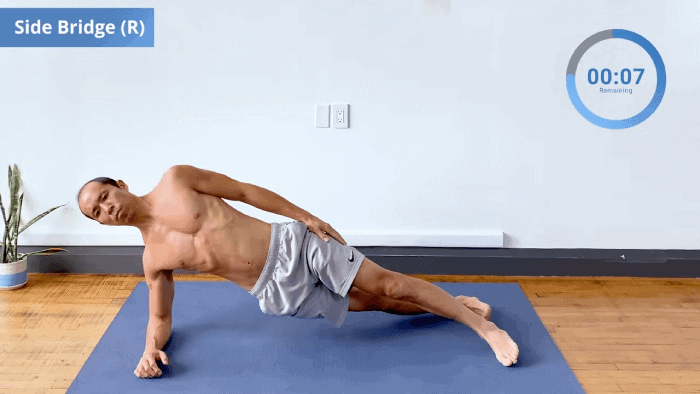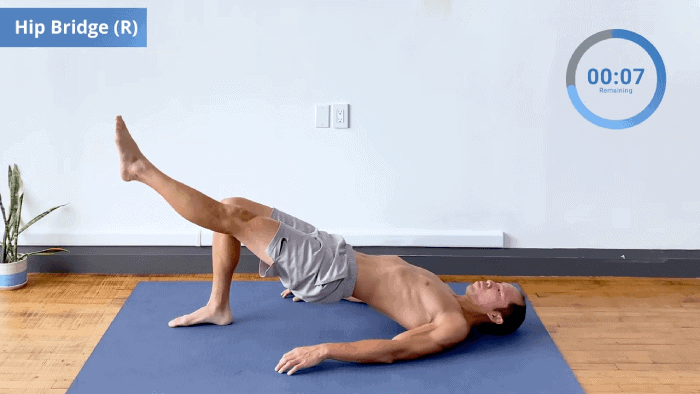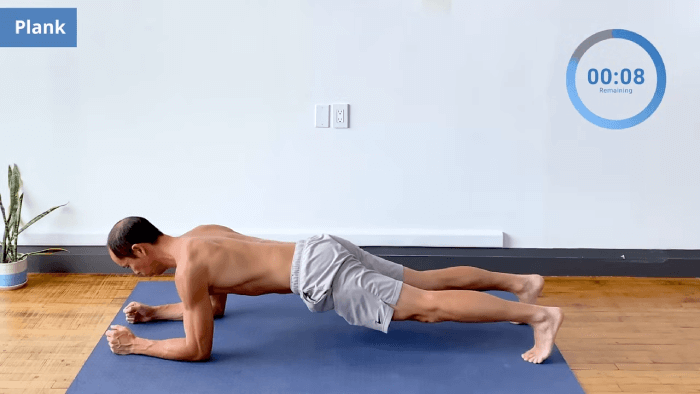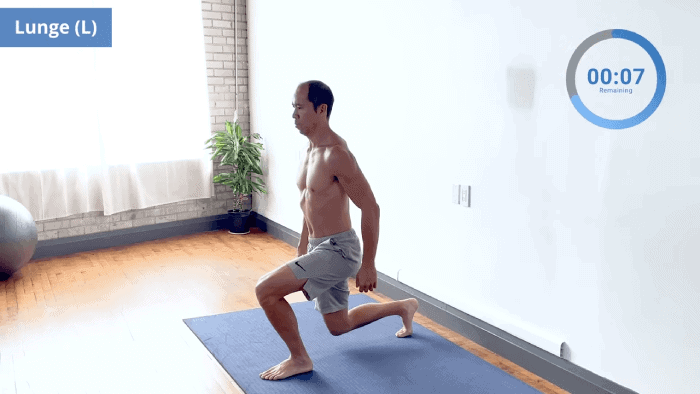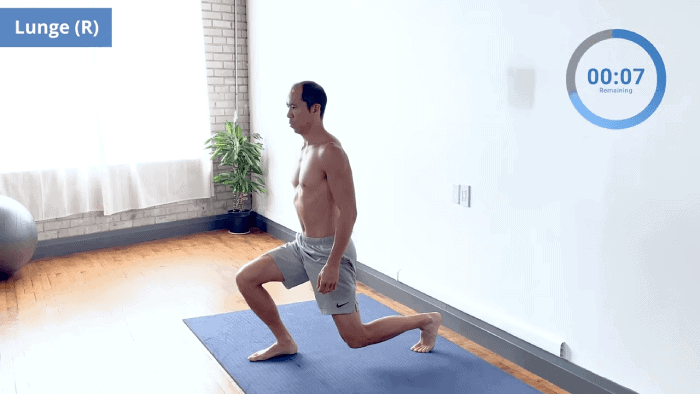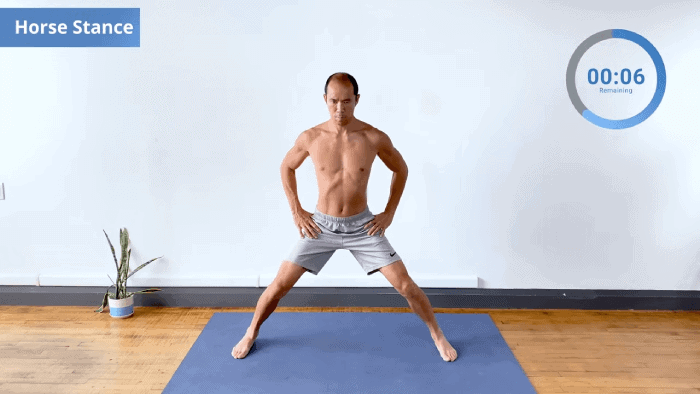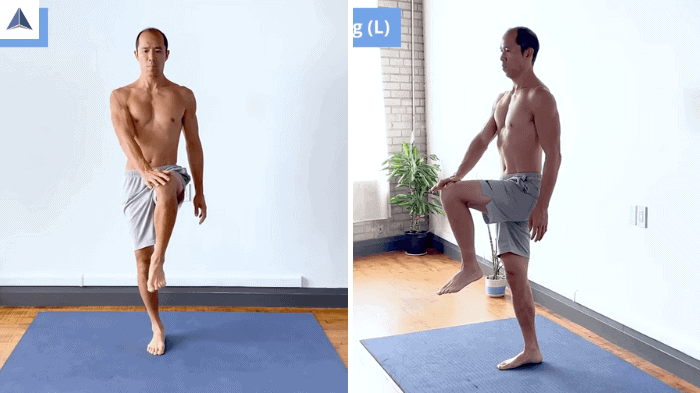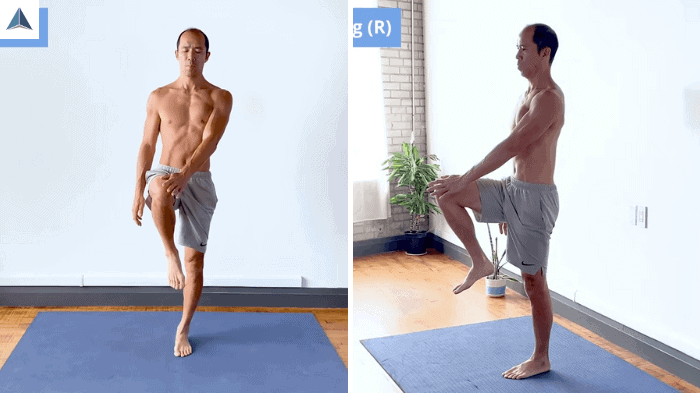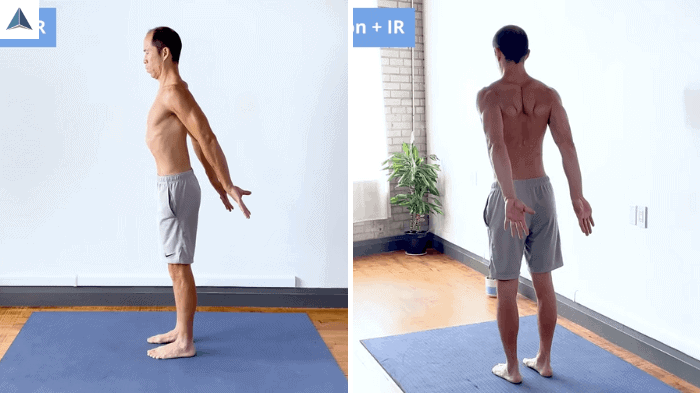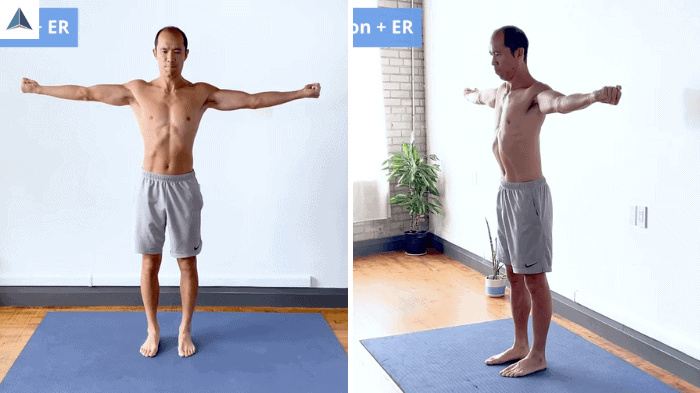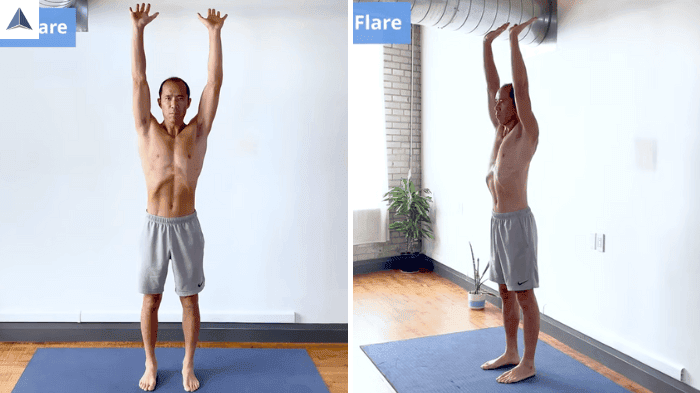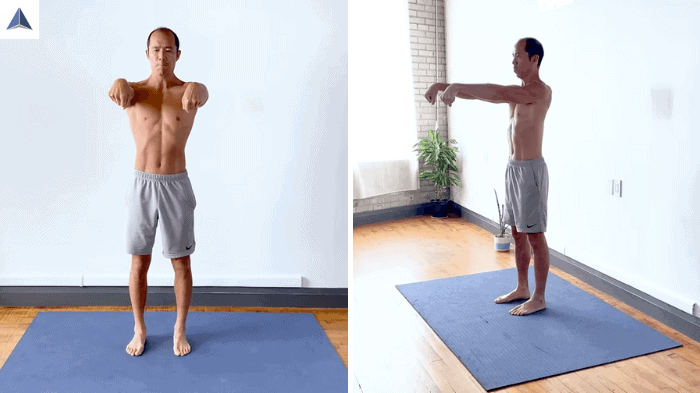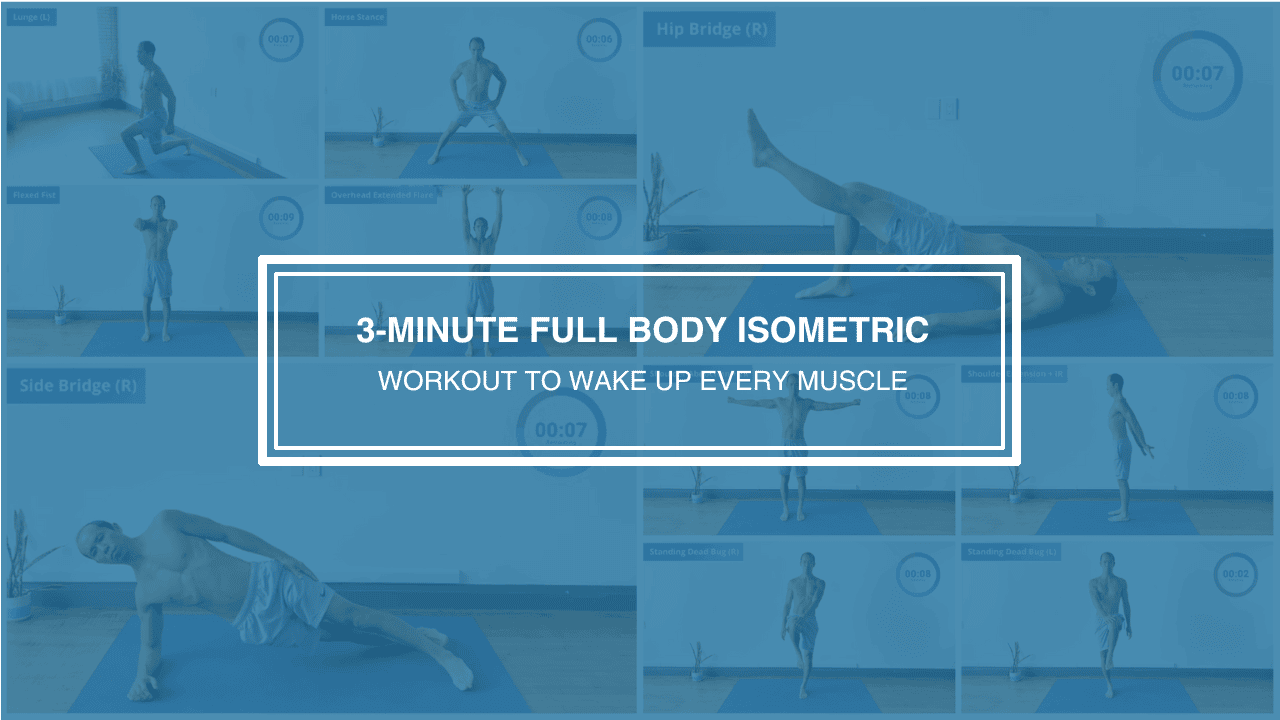
Feeling tight, sluggish, or like your muscles just aren’t firing the way they should? You’re not alone – and it’s not about age or fitness level. The truth is, if you’re not using your muscles properly and regularly, they slowly check out. That’s where this quick full body isometric workout comes in.
This 3-minute isometrics workout routine is designed to wake up every major muscle group in your body – from your glutes to your rotator cuff – without a single piece of equipment. You’ll hold each position in stillness, but don’t mistake still for easy. These isometric hold exercises are surprisingly powerful for joint stability, strength, and longevity.
So if you’re pressed for time or just need a daily reset for your body, this is your new go-to. Let’s dive in.
Why Isometric Exercises Are a Game-Changer
Isometric exercises involve holding a position under tension, without changing the length of the muscle. Think of a plank or a wall sit. These static contractions activate deep stabilizer muscles and teach you how to fire muscles on command – an essential skill if you want to move without pain or stiffness.
Here’s why full body isometrics are so effective:
- Improved neuromuscular activation: They help wake up dormant muscles that haven’t been pulling their weight.
- Joint-friendly strength: Since there’s no repetitive motion, they’re easier on joints than traditional exercises.
- Time-efficient: You don’t need a full hour to get your body aligned, engaged, and fired up.
Research has shown that isometric exercises can increase strength in as little as a few weeks, and they’re particularly useful for injury prevention and rehab [1].
The Full Body Isometric Workout Routine
This routine is about waking up the body safely, not pushing it to failure. Follow the sequence as described and focus on breath and posture. This routine activates:
- Core and postural muscles
- Glutes and hip stabilizers
- Shoulder stabilizers and rotator cuff
- Foot and balance control muscles
Let’s break it down.
Side Bridge Hold (Left Side)
Start this full body isometric workout on the ground with a side bridge. Lie on your left side and prop yourself up on your left forearm. Stack your feet, lift your hips off the ground, and keep a straight line from head to heels.
Keep your posture tall: chin tucked (like you’re making a double chin), shoulders back, and spine neutral. Breathe steadily and hold this position without collapsing into the shoulder.
- Lie on left side, forearm under shoulder
- Feet stacked or staggered
- Lift hips high, spine straight
- Tuck chin and pull shoulders back
- Breathe naturally
Benefits: This position targets the obliques, quadratus lumborum, glute medius, and shoulder stabilizers. It strengthens lateral core stability and reinforces spinal alignment – critical for reducing low back pain and improving posture.
One-Leg Hip Bridge (Left Foot Down)
Transition onto your back and place your left foot flat on the ground. Extend your right leg and bridge your hips up, squeezing the glutes at the top. Keep your shoulders pinned to the ground, chest open, and breath steady.
Focus on using the glutes to drive the movement, not the lower back. Stay tall and aligned from shoulders to knees.
- Lie on back, left foot flat, right leg extended
- Bridge hips up, squeeze glutes
- Keep shoulders back and chest open
- Spine neutral, avoid arching lower back
- Breathe naturally
Benefits: This exercise activates the glute max, hamstrings, spinal erectors, and core. It builds posterior chain strength and helps prevent imbalances that can lead to low back strain.
Side Bridge Hold (Right Side)
Same setup as the left side, but switch to the right. Keep your hips lifted, spine aligned, and core tight. Maintain strong shoulder posture and steady breathing.
- Right side down, elbow under shoulder
- Feet stacked or staggered
- Hips lifted, spine neutral
- Breathe and hold
Benefits: Strengthens the same muscles on the opposite side. Crucial for muscle balance and stability.
One-Leg Hip Bridge (Right Foot Down)
Repeat the bridge exercise with the right foot on the ground. Focus again on glute activation, maintaining good alignment from shoulders to knees.
- Right foot flat, left leg extended
- Bridge hips using glutes
- Shoulders grounded and chest lifted
- Neutral spine and relaxed neck
- Breathe smoothly
Benefits: Fires up the right glute and hamstring while reinforcing unilateral control and lower body symmetry – vital for injury prevention and joint stability.
Forearm Plank Hold
Come onto forearms and toes, maintaining a neutral spine.
The key is to tuck the chin, align your head with the spine, and avoid sagging or arching through the lower back.
- Elbows under shoulders
- Legs straight, hips level
- Tuck chin, long spine
- Engage glutes and abs
- Breathe evenly
Benefits: Planks activate the transverse abdominis, rectus abdominis, shoulders, and glutes. This deep core activation is essential for postural endurance and spinal integrity.
Lunge Hold (Left Leg Forward)
Step the left leg forward and drop into a deep lunge. Stay upright and squeeze the left glute.
- Step left foot forward
- Drop into a deep lunge
- Squeeze glute to hold
- Shoulders back, breathe naturally
Benefits: Improves glute activation and single-leg control. Great prep for running, squats, or everyday movement.
Lunge Hold (Right Leg Forward)
Switch legs and repeat. Squeeze the right glute, stay tall.
- Step right foot forward
- Lower into lunge
- Glute engaged, upright spine
- Natural breath
Benefits: Ensures balanced strength between both legs. Supports knee stability and walking gait.
Horse Stance Hold
Stand with your feet wide, knees slightly bent. Imagine squeezing the floor between your feet without moving.
- Feet wide apart
- Knees slightly bent
- “Squeeze” floor between feet
- Upright posture
Benefits: This hold trains the adductors – often overlooked but essential for hip and pelvic stability. It supports balance, coordination, and injury prevention during side-to-side movements.
Standing Dead Bug (Left Knee Up)
Lift your left knee and press into it with your right hand. Resist the pressure and engage your core.
- Left knee lifted
- Right hand pressing into knee
- Stay tall and balanced
- Core tight
Benefits: Combines balance, coordination, and isometric core activation. Also fires up foot stabilizers and hip flexors – key for dynamic movement.
Standing Dead Bug (Right Knee Up)
Same movement, now with the right knee and left hand. Keep balance and breath steady.
- Right knee lifted
- Left hand resisting
- Maintain posture
- Breathe through it
Benefits: Strengthens the hip flexors, deep core, and foot muscles on both sides of the body, reinforcing posture and control.
Shoulder Extension + Internal Rotation
Stand tall with arms down by your sides. Rotate the thumbs inward, pinch your shoulder blades together, and drive the arms slightly behind the body.
- Thumbs inward
- Shoulders pulled back
- Arms slightly behind hips
- Breathe tall
Benefits: Opens up the chest and strengthens internal rotators and scapular stabilizers.
Shoulder Abduction + External Rotation
Raise your arms slightly out, make fists, and rotate the biceps out. Keep your ribs down.
- Arms abducted ~30°
- Biceps rotated outward
- Fists strong
- Spine neutral
Benefits: Targets rotator cuff muscles like infraspinatus and supraspinatus. This position helps reverse slouched shoulders and supports shoulder health.
Shoulder Flexion + Wrist Extension
Arms up overhead, wrists extended like you’re shooting webs. Stand tall and reach high.
- Arms overhead
- Wrists extended
- Fingers flared
- Ribs down, tall spine
Benefits: Improves overhead mobility and posture. Great for countering tech neck and slouched sitting.
Flexed Fist Wrist Flexion Stretch
Make fists, extend elbows, and flex the wrists downward. Stretch the forearm muscles deeply.
- Elbows straight
- Wrists flexed downward
- Fists tight
- Stretch slowly
Benefits: Restores mobility and reduces tension in overworked forearm flexors. Supports grip strength.
Why Isometrics Work So Well for Muscle Activation
The beauty of isometric hold exercises lies in the control and awareness they build. You get to slow things down, align your joints properly, and tune into exactly which muscle you’re trying to fire. That’s the essence of muscle activation techniques.
Plus, they provide a safer option if you’re coming off an injury or dealing with chronic stiffness. You’re not forced to move through painful ranges of motion – you’re just holding steady, reinforcing ideal posture and movement habits.
And the best part? The effects carry over into dynamic movement. You’ll walk taller, sit better, lift more safely, and reduce risk of injury.
Get More From Every Workout
This full body isometric workout is a great warm-up, cool-down, or standalone reset during the day. Want more tools for neglected muscles?
Check out these upper body strength exercises to activate what sitting has shut off.
Or give your glutes and hamstrings some love with these lower body strength drills.
Final Thoughts
Remember the motto: use it or lose it. This quick full body isometric workout helps you use every important muscle, even the ones modern life tends to ignore. Do it daily – or a few times a week – and you’ll be stronger, more stable, and better aligned.
Don’t wait for stiffness or pain to force you into action. Proactively maintain your body so you can move freely, now and for years to come.
Download the ROM Coach App and do the daily tune-up – your joints will thank you.
Key Takeaways
- Full body isometrics activate stabilizer muscles, improve posture, and increase joint strength.
- This 3-minute routine hits all major regions of the body using safe, low-impact isometric hold exercises.
- Isometric workouts are ideal for muscle activation, injury prevention, and time-efficient training.
- Use this routine as a warm-up, daily movement reset, or active recovery tool.
- Download the ROM Coach App to do the Daily Movement Tune-Up and keep your joints healthy for life.

